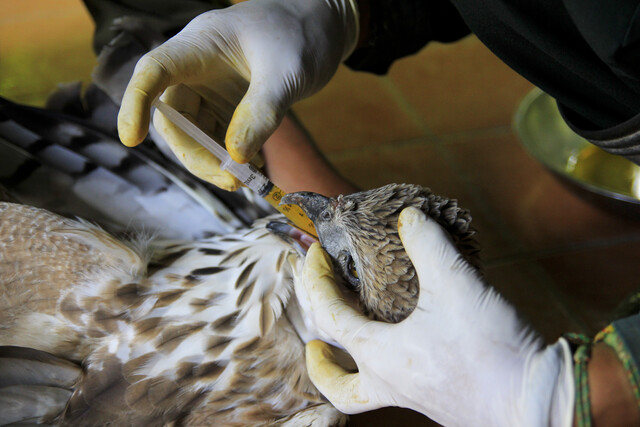Online Class: Snakes of the Western Hemisphere

no certificate
with CEU Certificate*
-
12Lessons
-
31Exams &
Assignments -
522Students
have taken this course -
4Hours
average time -
0.4CEUs
Course Description
Get ready to dive into a world that's as thrilling as it is enlightening. Whether you're captivated by the sleek, silent movement of a python or mesmerized by the ancient lore surrounding the cobra, this course on Snakes of the Western Hemisphere offers a truly unique journey into the mysteries, biology, and cultural significance of these fascinating reptiles. Imagine unlocking the secrets of creatures that have roamed the Earth for millions of years, from the rainforests of South America to the sun-baked deserts of the American Southwest. This course doesn't just scratch the surface--it immerses you in the heart of snake evolution, behavior, and their vital role in ecosystems.
Picture yourself gaining the knowledge to confidently identify some of the world's most impressive and elusive species. Want to know what makes the rattlesnake's venom so deadly? Or how the boa constrictor silently ambushes its prey? You'll come away from this course with a deep understanding of these serpents, from their remarkable biological adaptations to their role in keeping ecosystems balanced. This isn't just a learning experience; it's a journey that equips you with the insight to appreciate the power, elegance, and sometimes misunderstood beauty of snakes.
But this course is more than just biology. You'll explore the myths and stories that have shaped human history--how snakes have been revered, feared, and symbolized in cultures for centuries. From the serpents of ancient Egyptian lore, believed to guard treasures and secrets, to the cobras that have become iconic in Indian traditions, you'll be fascinated by how these creatures have influenced art, religion, and folklore. Imagine unraveling these stories and gaining a new respect for snakes, not as villains, but as complex and essential beings within the tapestry of life on Earth.
Knowledge That Empowers: If you've ever been curious about what to do in the event of a snake encounter, this course will arm you with practical, life-saving tips. Learn how to prevent snake bites, what to do in case of an attack, and the most effective treatments available today. You'll feel empowered, knowing exactly how to navigate environments where snakes are present--whether you're out hiking, camping, or even considering a pet snake.
By the end of this course, you won't just learn about snakes--you'll understand them. You'll be able to distinguish between the world's most venomous species, decode their behaviors, and appreciate their contributions to biodiversity. The lessons you take away will be rooted in both science and experience, helping you grasp how snakes communicate, defend themselves, and thrive in some of the world's most hostile environments.
Why take this course? Whether you're a nature enthusiast, a future snake owner, or simply curious about the natural world, this course will give you unparalleled insight. Imagine impressing your friends with newfound knowledge about the snake that crossed your path on a hike, or confidently explaining the differences between venomous and non-venomous species. Perhaps you're a lover of adventure and knowledge--this course will fuel that passion, giving you a deeper connection to the natural world.
Snakes have been feared, misunderstood, and often overlooked, but after taking this course, you'll find yourself filled with admiration and respect for these remarkable creatures. You'll see the beauty in their movements, the sophistication in their hunting strategies, and the importance of their role in maintaining nature's balance. If you're ready for an unforgettable learning experience that opens your eyes to one of nature's most intriguing animals, this course is for you.
Don't miss out on this opportunity to explore the awe-inspiring world of snakes. You're about to embark on a journey that's equal parts thrilling and educational. Dive in now, and get ready to see snakes in a whole new light!
- Completely Online
- Self-Paced
- Printable Lessons
- Full HD Video

- 6 Months to Complete
- 24/7 Availability
- Start Anytime
- PC & Mac Compatible
- Android & iOS Friendly
- Accredited CEUs

Course Lessons
Lesson 1. The Evolutionary Tale of Snakes
 Lesson 1 Video
Lesson 1 Video Review 2 Practice Worksheets
Review 2 Practice Worksheets Lesson discussions: Snakes; Reasons for Taking this Course
Lesson discussions: Snakes; Reasons for Taking this Course Complete Assignment: An Introduction
Complete Assignment: An Introduction Assessment: Lesson 1: Introduction and History of Snakes
Assessment: Lesson 1: Introduction and History of Snakes Assessment: Lesson 1 Review Exam
Assessment: Lesson 1 Review Exam
Lesson 2. The Enigma of Serpents: Guardians and Challengers
 Lesson 2 Video
Lesson 2 Video Review 2 Practice Worksheets
Review 2 Practice Worksheets Complete: Lesson 2 Activity
Complete: Lesson 2 Activity Assessment: Lesson 2: Snake Myths in Religion and Culture
Assessment: Lesson 2: Snake Myths in Religion and Culture Assessment: Lesson 2 Review Exam
Assessment: Lesson 2 Review Exam
Lesson 3. Snakes Unveiled: Understanding Their Cultural and Ecological Roles
 Lesson 3 Video
Lesson 3 Video Review 2 Practice Worksheets
Review 2 Practice Worksheets Complete: Lesson 3 Activity
Complete: Lesson 3 Activity Assessment: Lesson 3: Types of Snakes and Snake Myths vs. Fact
Assessment: Lesson 3: Types of Snakes and Snake Myths vs. Fact Assessment: Lesson 3 Review Exam
Assessment: Lesson 3 Review Exam
Lesson 4. Snake Skeletons: Evolutionary Marvels
 Lesson 4 Video
Lesson 4 Video Review Practice Worksheet: Lesson-4-WorkSheet-13736.pdf
Review Practice Worksheet: Lesson-4-WorkSheet-13736.pdf Assessment: Lesson 4: Biology of Snakes
Assessment: Lesson 4: Biology of Snakes Assessment: Lesson 4 Review Exam
Assessment: Lesson 4 Review Exam
Lesson 5. Carnivorous Diets: From Thread Snakes to Anacondas
 Lesson 5 Video
Lesson 5 Video Review 2 Practice Worksheets
Review 2 Practice Worksheets Complete: Lesson 5 Activity
Complete: Lesson 5 Activity Assessment: Lesson 5: Snake Behavior
Assessment: Lesson 5: Snake Behavior Assessment: Lesson 5 Review Exam
Assessment: Lesson 5 Review Exam
Lesson 6. The Remarkable Boidae: Masters of Anatomy and Adaptation
 Lesson 6 Video
Lesson 6 Video Review 2 Practice Worksheets
Review 2 Practice Worksheets Complete: Lesson 6 Activity
Complete: Lesson 6 Activity Assessment: Lesson 6: The Boidae Family (Boas and Pythons)
Assessment: Lesson 6: The Boidae Family (Boas and Pythons) Assessment: Lesson 6 Review Exam
Assessment: Lesson 6 Review Exam
Lesson 7. The Role of Elapids in Ecosystems and Human Interactions
 Lesson 7 Video
Lesson 7 Video Review 2 Practice Worksheets
Review 2 Practice Worksheets Complete: Lesson 7 Activity
Complete: Lesson 7 Activity Assessment: Lesson 7: Elapids (Cobras, Mambas, Kraits and Coral Snakes)
Assessment: Lesson 7: Elapids (Cobras, Mambas, Kraits and Coral Snakes) Assessment: Lesson 7 Review Exam
Assessment: Lesson 7 Review Exam
Lesson 8. Silent Hunters: The Role of Vipers in Ecosystems
 Lesson 8 Video
Lesson 8 Video Review 2 Practice Worksheets
Review 2 Practice Worksheets Assessment: Lesson 8: Viperidae (Vipers and Rattlesnakes)
Assessment: Lesson 8: Viperidae (Vipers and Rattlesnakes) Assessment: Lesson 8 Review Exam
Assessment: Lesson 8 Review Exam
Lesson 9. Colubrids and Blind Snakes: Ecosystem Balancers
 Lesson 9 Video
Lesson 9 Video Review 2 Practice Worksheets
Review 2 Practice Worksheets Assessment: Lesson 9: Blind Snakes and Colubrids
Assessment: Lesson 9: Blind Snakes and Colubrids Assessment: Lesson 9 Review Exam
Assessment: Lesson 9 Review Exam
Lesson 10. The Balance of Nature: Living Harmoniously with Snakes
 Lesson 10 Video
Lesson 10 Video Review Practice Worksheet: Lesson-10-HomeWork-13763.pdf
Review Practice Worksheet: Lesson-10-HomeWork-13763.pdf Complete: Lesson 10 Activity
Complete: Lesson 10 Activity Assessment: Lesson 10: Snake Safety
Assessment: Lesson 10: Snake Safety Assessment: Lesson 10 Review Exam
Assessment: Lesson 10 Review Exam
Lesson 11. Antivenin: A Lifesaving Necessity for Snakebite Victims
 Lesson 11 Video
Lesson 11 Video Review 2 Practice Worksheets
Review 2 Practice Worksheets Lesson discussions: Snake Bites
Lesson discussions: Snake Bites Assessment: Lesson 11: When Snakes Attack
Assessment: Lesson 11: When Snakes Attack Assessment: Lesson 11 Review Exam
Assessment: Lesson 11 Review Exam
Lesson 12. Exploring Snake Hobbies: An Age-Old Fascination
 Lesson 12 Video
Lesson 12 Video Review 3 Practice Worksheets
Review 3 Practice Worksheets Lesson discussions: Snake Hobbies; Program Evaluation Follow-up Survey (End of Course); Course Comments; Reasons for Taking this Course
Lesson discussions: Snake Hobbies; Program Evaluation Follow-up Survey (End of Course); Course Comments; Reasons for Taking this Course Assessment: Lesson 12: Snake Hobbies
Assessment: Lesson 12: Snake Hobbies Assessment: The Final Exam
Assessment: The Final Exam
Learning Outcomes
- Define the evolutionary adaptations that enabled snakes to thrive in diverse habitats, such as limbless bodies and specialized hunting methods, by the end of the lesson.
- Identify key historical milestones in the evolutionary journey of snakes, including their descent from ancient lizards and adaptations through the Cretaceous period, by the lesson's conclusion.
- Analyze the role of snakes in religious myths by examining contrasts between at least two cultures, explaining how each culture uses snake imagery to convey moral or spiritual lessons.
- Identify and describe at least three different cultural interpretations of snake symbolism, highlighting both positive and negative aspects, using specific historical examples.
- Define the key adaptations of the Acrochordidae family that enable them to thrive in aquatic environments.
- Identify the ecological benefits of non-venomous snakes like king snakes and rat snakes in agricultural areas.
- Define the unique anatomical adaptations in snakes that enable them to swallow prey much larger than their own heads.
- Describe the ecological significance of snakes in maintaining population control of prey species within their habitats.
- Describe various snake locomotion methods, such as lateral undulation and sidewinding, and explain how they are adapted to different environments.
- Define the diverse feeding strategies among snakes, including methods like constriction and specialization in prey types, by identifying key anatomical adaptations.
- Compare the geographic distribution of boas and pythons, identifying unique adaptations that enable them to thrive in diverse habitats worldwide.
- Define the anatomical features that distinguish boas and pythons from other snake families and explain their evolutionary significance.
- Demonstrate the ability to identify key anatomical features distinguishing elapids from other snake families, such as fixed, hollow fangs for venom delivery.
- Demonstrate mastery of lesson content at levels of 70% or higher.
Additional Course Information

- Document Your Lifelong Learning Achievements
- Earn an Official Certificate Documenting Course Hours and CEUs
- Verify Your Certificate with a Unique Serial Number Online
- View and Share Your Certificate Online or Download/Print as PDF
- Display Your Certificate on Your Resume and Promote Your Achievements Using Social Media

Choose Your Subscription Plan
No Certificate / No CEUs
This course only
| Includes certificate | X |
| Includes CEUs | X |
| Self-paced |

|
| Instructor support |

|
| Time to complete | 6 months |
| No. of courses | 1 course |
Certificate & CEUs
This course only
| Includes certificate |

|
| Includes CEUs |

|
| Self-paced |

|
| Instructor support |

|
| Time to complete | 6 months |
| No. of courses | 1 course |
Certificates & CEUs
Includes all 600+ courses
| Includes certificate |

|
| Includes CEUs |

|
| Self-paced |

|
| Instructor support |

|
| Time to complete | 12 Months |
| No. of courses | 600+ |
Certificates & CEUs
Includes all 600+ courses
| Includes certificate |

|
| Includes CEUs |

|
| Self-paced |

|
| Instructor support |

|
| Time to complete | 24 Months |
| No. of courses | 600+ |
Student Testimonials
- "I took this course as I was thinking of getting a pet snake. I now realize that it would not be a good idea for me. I now have a better appreciation for snakes but will stick to my cat and dog. Great course, truly enjoyed it. Thanks." -- Debra G.
- "what was most helpful was the feedback on assignments and exams but also the supplemental links for lesson enrichment." -- Richard T.






